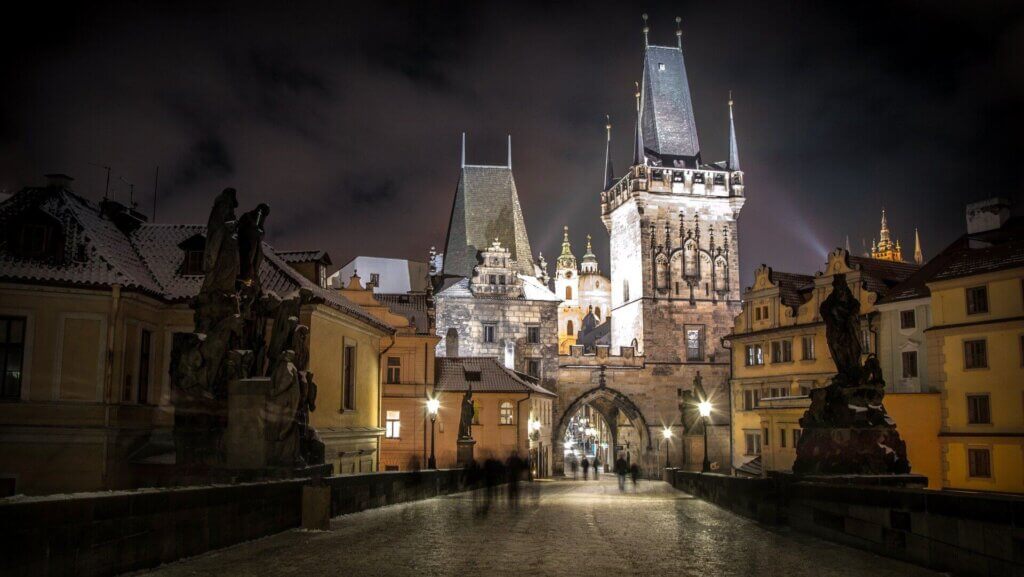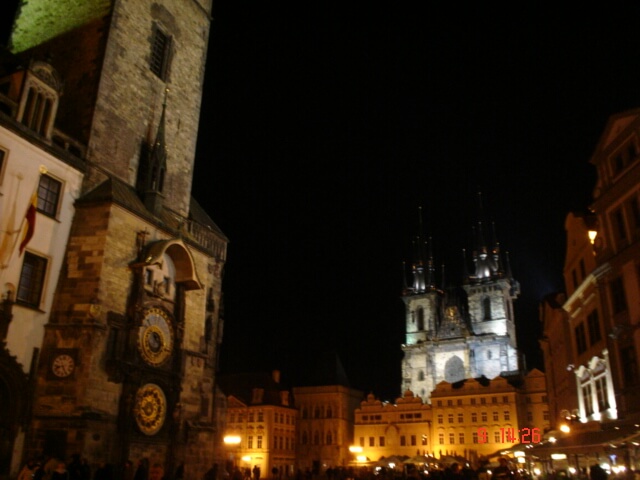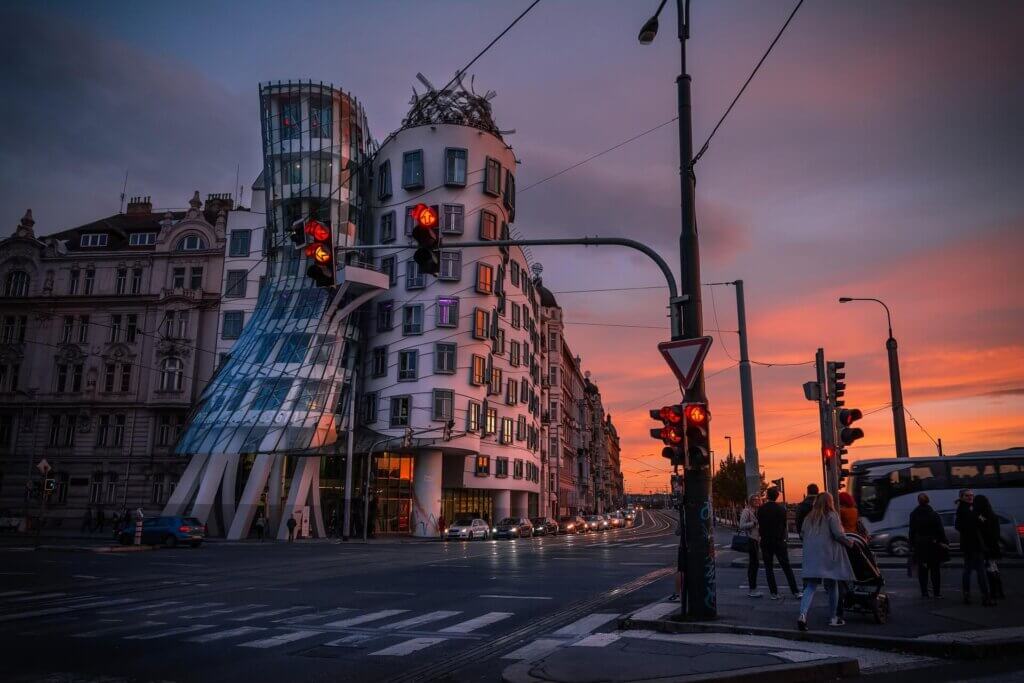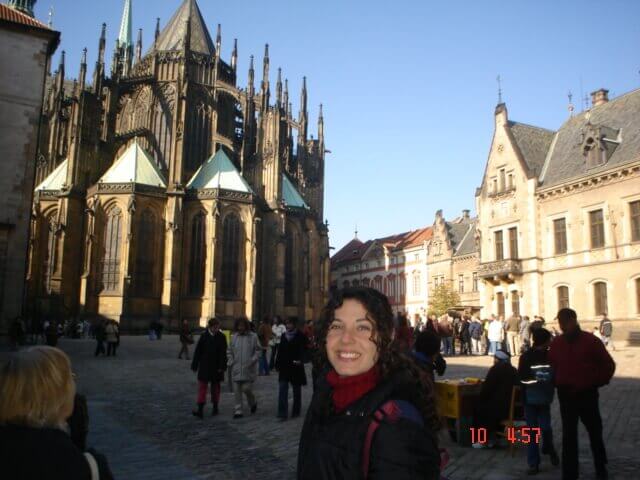For many people, when they think of the most beautiful city in Europe, Paris comes to mind.
Indeed, Paris is a beautiful city, but we must declare ourselves biased with the ancient, artistic and beautiful city of Prague, capital of the current Czech Republic and a jewel on the banks of the Vltava River.
Our trip to this city filled us with culture, surprises and joys.

Prague Castle
 Prague Castle, since the eleventh century has been the seat of power of the entire region: seat of the kings of Bohemia (the historical region where Prague is located and which was a former independent kingdom), of the Emperors of Austria-Hungary, of the presidents of Czechoslovakia, of the Nazi criminal Heydrich, of the communist government and of the presidents of the current Czech Republic.
Prague Castle, since the eleventh century has been the seat of power of the entire region: seat of the kings of Bohemia (the historical region where Prague is located and which was a former independent kingdom), of the Emperors of Austria-Hungary, of the presidents of Czechoslovakia, of the Nazi criminal Heydrich, of the communist government and of the presidents of the current Czech Republic.
This huge castle has several attractions. One of the most emblematic is the Cathedral of San Vito, Gothic Catholic cathedral whose construction began in the fourteenth century.
Here are kept the Jewels of the Czech Crown,as well as the tombs of several important bishops of the city. Its altars and stained glass windows are also worth admiring.
One can access the bell tower, after climbing more than 300 steps, and get the best view of Prague.
Terezín Concentration Camp
The Terezín concentration camp near Prague, was another of our visits, given its propaganda as a “tourist site”.
This was a prison camp or locality or “ghetto” established by the Nazis after the invasion and dismemberment of Czechoslovak.
We understand the need to never allow events like the Holocaust to be forgotten and that is the raison d’être of maintaining these dreadful places.
But we do not recommend impressionable people to visit such places.
In this place, we feel deeply depressed at the documents and stories that one can see in the field about what happened there during World War II.
Paradoxically, it was a “model camp” that the Nazis showed to the Red Cross or to foreign representatives who wanted to verify what life was like in those places.
In Terezin, prisoners were allowed to lead a cultural life. They could make artistic manifestations as they wished. There were medical centers (run by Jews) and some domestic economy (shops and shops), along with smuggling that made some get rich.
But in reality, this site was made to deliberately make its “residents” sick from overcrowding, to reduce their freedom and life expectancy.
As a result, an estimated 35,000 people died there from disease.
More sinisterly, it was a transit site from which residents were taken to places of extermination such as Auschwitz.
Town Hall Square with astronomical clock
 Also called the Old Town Square, it is the meeting point for tourists and Praguens. A site full of history and memorable facts.
Also called the Old Town Square, it is the meeting point for tourists and Praguens. A site full of history and memorable facts.
One of the things that caught our attention the most was the Astronomical Clock, on one of the walls of the City Hall.
Its oldest parts date from 1410 and it continued to be added mechanisms, figures and details until well into the nineteenth century.
It is a beautiful work of art and applied engineering where you can see the solar cycles, moles, the ancient Bohemian calendar and certain astronomical aspects. It is a kind of mechanical computer that performs complex movements to measure transits of celestial objects and stations.
It also shows the zodiacal band with the signs of the zodiac and the ecliptic, and points to the equinoxes and solstices.
A remarkable work of medieval engineering, long before the invention of computer chips.
The Charles Bridge

This beautiful bridge is the oldest in the city, finishing its construction in 1402.
It is common to see painters performing their works on this bridge, with the city in the background.
We did not know this bridge or its tourist value. It happened that one night we were busing by nearby and saw the lights on the bridge. It caught our attention and we decided to go down to see.
From the bridge, you have an absolutely stunning night view of Prague.
On this bridge, there are 30 statues of exceptional artistic value, made by renowned Czech and foreign artists from various eras. But for heritage reasons, the original 30 statues were taken to the National Museum and replaced with replicas on the bridge.
One of the most famous is the statue of St. John Nepomuk, supposedly located in the same place from where this saint was thrown into the Vltava River, for contravening the wishes of the king at the time who was unaware of the authority of Rome.
Casa Danzante, in the New City
 The Prague Dancing House is really not a house, but a 9-storey building whose unusual shape has become an icon of the city’s new architecture.
The Prague Dancing House is really not a house, but a 9-storey building whose unusual shape has become an icon of the city’s new architecture.
Built in the 90s of the last century, the Dancing House is the work of architects Vlado Milunic (Czech) and Frank Gehry (Canadian).
At first, and as happened at the time with the Eiffel Tower,the work faced opposition from certain groups of people who said it broke with the harmony of baroque and modernist buildings of adjacencies (although “baroque” and“art nouveau”are already quite different).
But the support of the then president, Vaclav Havel gave the impetus to realize the project.
The truth is that today it is an iconic place in the beautiful city of Prague and its night vision transports us to a kind of architecture of the future.
Conclusions
 Prague in particular and the Czech Republic in general breathe art and culture on all sides. Czech society has historically been a source of artistic irradiation, most notably through its exiles around the world.
Prague in particular and the Czech Republic in general breathe art and culture on all sides. Czech society has historically been a source of artistic irradiation, most notably through its exiles around the world.
Therefore, the Czech capital had to live up to that inclination. For lovers of plastic arts, architecture, music and even craft brewing, visiting this ancient city is a must.
And you, who would you recommend us visit in this mysterious city?
